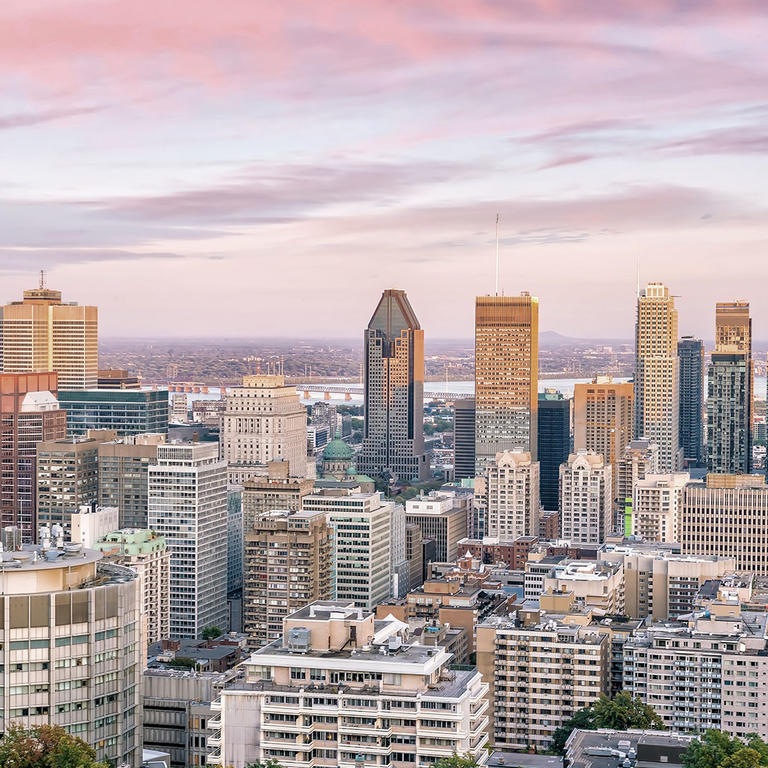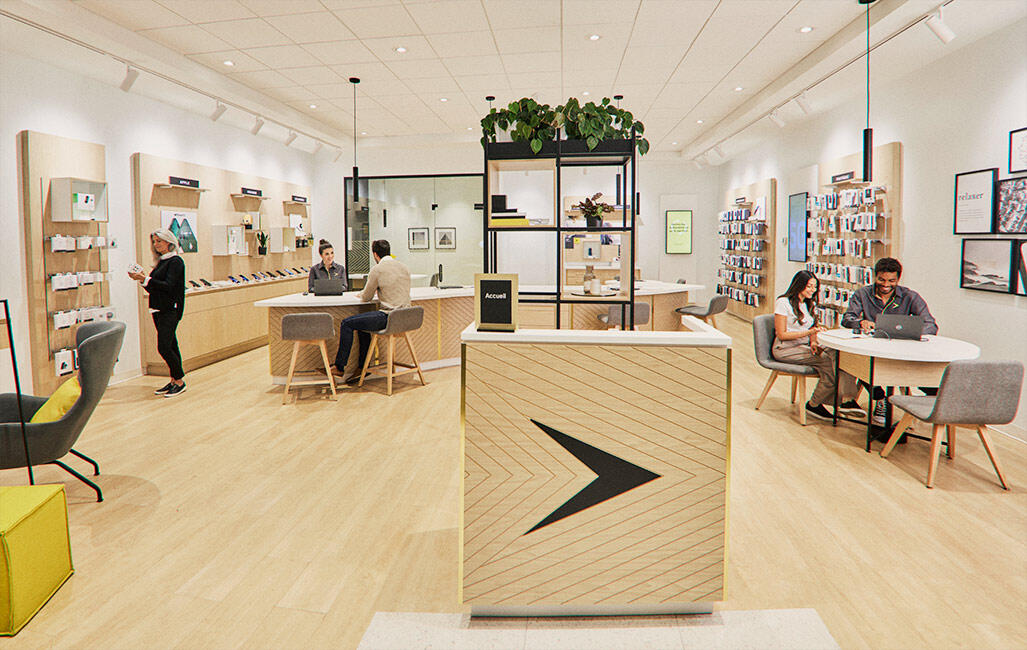
The “smart city” concept is often used to talk about municipalities of the future. But metropolises around the world are already laying claim to that status today. In Québec, several cities have started deploying such projects. Fuelled by big data and the Internet of things, smart cities are cutting-edge ecosystems that are also created to enhance the well-being of communities themselves. Take a guided tour of a revolution that’s underway with a plethora of possibilities.
Good to know
You won’t find any communally agreed-upon definition of “smart city” in this article. The expression is derived from the word “smart,” a loan word from a similar technology, that of the smartphone. Both innovations share interactivity and process automation as cornerstone functionalities.
To give you the short version of the story, it was computing giant IBM who, looking to reposition itself after a period of financial hardship, identified cities as being an interesting potential market for the deployment of new technologies. And with good reason! Adaptive traffic lights, smart streetlamps, optimized parking, and air quality and precipitation tracking were just a sampling of the functionalities likely to enhance residents’ quality of life.
What is a smart city?
Québec’s Science and Technology Ethics Commission (known by its French acronym, CEST) describes the smart city idea as “the increased use and integration of digital analytics technology and information processing within a municipality, as well as in the service of public policy and an economic environment focused on innovation. The stated goal is to optimize resources, improve residents’ quality of life, and establish open, participative, and transparent governance.”
This means the smart city concept goes far beyond just information technology, which is considered less of an end in itself and more as a way of achieving established organizational objectives as part of the revitalization of a municipality. A number of other considerations have also become part to this definition, which, depending on the source consulted, may include:
- adopting a sustainable development approach;
- addressing concerns about climate change;
- supporting innovative companies with high growth potential;
- integrating many aspects of urban living (economy, education, infrastructure, transportation, and security, to name just a few) into this digital transformation.
Good to know
The stated goal is to optimize resources, improve residents’ quality of life, and establish open, participative, and transparent governance.
Source: CEST
Smart city, smart community?
There are several different names given to the same concept. “Smart city” is obviously the most widely used term, but it’s not the only one.
Good to know
“A smart community is composed of the social ecosystem and its connections. It covers all dimensions of collective living. We believe that a smart municipal administration must necessarily address the social fabric to be considered a true smart collectivity,” explains a white paper on the subject from the Réseau de l’informatique municipale du Québec (RIMQ).
Thus, the term “smart community” emphasizes the human aspect of smart cities and facilitates an emphasis on the benefit to civil society, beyond the actions performed solely by a municipality’s administration.
The smart region concept is linked to municipalities that choose to band together to equip themselves with infrastructure and services belonging to smart cities. In its white paper, RIMQ shared a few examples to demonstrate the importance of smart regions.
“Several municipalities and smaller cities have successfully gambled on uniting to take advantage of information technologies at a lower cost. For example, [...] consider the recent merging of four cities in Vallée-du-Richelieu to take advantage of information technologies and are now aiming to integrate their infrastructure...”
Background technology
Various technologies need to be deployed to head in the smart city direction. In general, they can be grouped into three categories. Obviously, a big role is played by the Internet of things, the term given to devices connected to the Internet that are able to communicate together to collect, transmit, and process data.
- A source of information and a data transmission network
Sensors, cameras, radar, global positioning systems (GPS), and RFID (radio frequency identification) tags are used to track potential incidents and transmit information collected from a number of available networks. For example, connected waste containers can indicate how full they are, thereby enabling optimized collection scheduling. - Digital data
Cities that develop an ability to transform raw data into usable and useful information for decision making will definitely have an advantage compared to other municipalities. Metadata, or big data, come from a variety of sources and summarize elementary information about other data in order to facilitate research and manipulation. A city using algorithms and analytics tools driven by artificial intelligence can thereby attain improved operational efficiency. - Data use in services
A number of systems—3D modelling and mapping, mobile applications, and surveillance software—are then used to help managers with decision making and enable them to track various indicators in real time.
As an example, geomatics (the automated processing of geographic information) enables remote tracking of ambulances on screen, forest fires through satellite imaging, and flooding risks in the spring. Also, did you know that cities in Québec located along waterways are now better prepared to handle floods thanks to LoRaWAN, a low-power, wide-area networking protocol?
Reducing flooding risk
Unfortunately, a number of cities have suffered from the periodic flooding that happens when snow melts. Despite regular surveillance by city employees, who patrol night and day to track water levels, water bodies still flood their banks and cause millions of dollars’ worth of damage.
Smart cities can now rely on the expertise of X-TELIA, which since October of 2019 has offered sensors that can be placed near rivers. These wireless devices can continue to work on batteries for 20 years, without the need to recharge or replace them.
Thanks to these sensors, municipal employees can now put their attention on their usual set of tasks without having to constantly check on problem areas. As soon as the water reaches a critical threshold, employees receive alerts on their smartphones advising them of the situation, thereby facilitating targeted intervention at exactly the right moment.
Concepts and technologies in evolution
The smart city concept therefore refers to a range of diverse initiatives that all aim to improve services to residents and the efficiency of municipal management through digital technology. As demonstrated above, the use of various sensors to collect data enables the fulfillment of both goals simultaneously.
X-TELIA’s solutions are specifically used to track climate-related changes and snow-removal operations, to measure the temperature at the bottom of the ocean, and even to prevent heat stroke in dairy cattle.
Municipal decision-makers who would like to start setting up the foundations of a smart city should have recourse to a trusted partner to design this type of major project. Videotron Business and X-TELIA have not only the expertise needed, but also a wide range of technological solutions to enable you to start creating your city of the future, today. And for such a stimulating, ambitious, and motivating vision, you need to choose suppliers that already have a proven track record!
The experts at Videotron Business can help you target your needs and put a variety of solutions in place.

Points to remember
- Smart cities are cutting-edge ecosystems that are partially created to enhance the well-being of communities themselves.
- The stated goal is to optimize resources, improve residents’ quality of life, and establish open, participative, and transparent governance.
- The smart city concept goes far beyond just information technology.
10 Feb 2022, By Videotron Business






